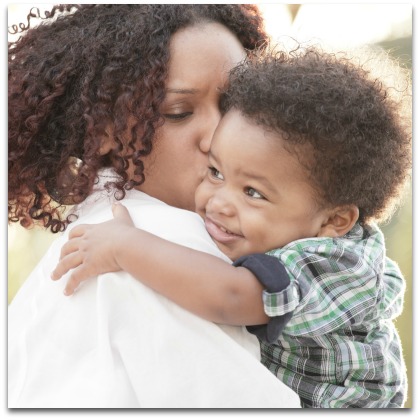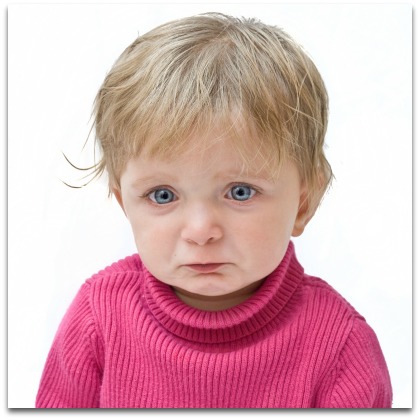 One feeling all first-time parents can relate to is fear.
One feeling all first-time parents can relate to is fear.
The good news is that there is one way you can tackle that emotion before it gets the better of you: preparation. By making sure everything is in place to keep your child safe, you’ll be free to focus on the making the most of parenthood.
To help give your babyproofing a head start, we’ve come up with a list of ten items that every parent shouldn’t be without, below:
1. Sunscreen
Prolonged exposure to the sun can cause lasting damage to a child’s skin. It’s therefore advisable to make sure you have a sunscreen with an SPF factor of 15 or above nearby at all times.
The American Academy of Dermatologists suggest that up to 80% of UVA rays can pass through cloud cover, so make sure your child is covered up even when it’s overcast outside.
If your infant is under the age of six months, you should avoid using sunscreen altogether. As children of that age have a higher surface-area to body-weight ratio, it can lead to them absorbing too many of the chemicals found in sunscreen.
2. A Thermometer
The simplest and most accurate way to check if a child under the age of three has a fever is to use a rectal thermometer. They can be picked up from a local chemist or online for around $10.
First-time parents may also feel more confident using a baby bath thermometer as opposed to their elbow to test the temperature of any bathing water.
3. A Safety Guard
A child under the age of five ends up in an emergency department every six minutes as a result of a stair-related injury, according to the Nationwide Children’s Hospital in Columbus, Ohio.
One simple way to avoid your child becoming part of that statistic is to install a safety guard at the top of your staircase.
They generally come in two designs: a pressure-mounted fitting or a wall-fixed option. The latter is generally safer but requires drilling into a wall to fix them into place.
4. Sensor Lights
 Most young children struggle to adapt to sleeping by themselves, making midnight trips to your bedroom a likely occurrence.
Most young children struggle to adapt to sleeping by themselves, making midnight trips to your bedroom a likely occurrence.
This can be hazardous in the dark, particularly if they’re not quite tall enough to reach for the light switches just yet.
A simple solution is to install a sensor light. You can either buy a simple plug-in night light that comes equipped with a motion sensor or go more high-tech by investing in some smart lights.
5. A Car Seat
Considering that car seats are mandatory by federal law, purchasing one should probably be close to the top of your priority list. In fact, a hospital won’t let you take your baby home unless you have one.
6. A House Alarm
Over the last couple of years, baby monitors have evolved into full-blown home security systems.
Some of the latest indoor security cameras come with their own smartphone app, which will alert you to any break-in attempts. This will ensure peace of mind if you’ve left your children at home with a caregiver while you’re out.
For those with older kids, some systems can even let you know when they have arrived home. If you’re away for the weekend or they’re coming home late, you can rest assured knowing they’ve returned safely without having to nag them with constant calls and texts.
7. Diaper Cream
Diaper rash is something you’re likely going to come across with a new-born, however many preventative measures you take.
A diaper cream, though, will at least give your baby a fighting chance of making it through their younger years without any painful sores.
Make sure you pick one with all-natural ingredients. Ideally, it should have a zinc oxide percentage somewhere between 12 and 20 percent, as this is the key ingredient that helps repel moisture.
8. Window Locks
 Once a baby starts to move about independently, it’s time to install some window locks.
Once a baby starts to move about independently, it’s time to install some window locks.
The Child Accident Prevention Trust suggest that any locks should restrict windows opening any further than 6.5cm.
9. Magnetic Cupboard Locks
Affordable and easy to install, magnetic cupboard locks will make sure that domestic cleaning products don’t fall into the wrong hands. Prevention is certainly a better option in this case!
10. Socket Covers
Roughly 1,300 children end up hospitalized each year as a result of an accident involving an electrical outlet, according to data from the U.S. Consumer Product Safety Commission.
Installing new tamper-resistant electrical outlets can help to reduce this risk, but if a child were to somehow stick two metal paper clips into both holes at the same, they could still be electrocuted.
That’s why we’d recommend going for socket covers instead. Most come with child-protection features, such as finger buttons on either side, to help prevent unwanted access.
The 2-minute Action Plan for Fine Parents
For our quick contemplation today:
- How many of these items did you already know? Does the majority of baby proofing come from a common sense approach that you already have within you?
- Do you need all of these items right away? What is essential now and what could come later?
- What other steps could you take to make your home safer? Could you move your cutlery to higher draws? Could you remove any furniture that could be pulled over?
The Ongoing Action Plan for Fine Parents
Ask friends and family if they would swear by any particular must-have safety item when it comes to looking after children. To avoid spending a small fortune, don’t be afraid to buy second hand. Finally, when your child does have an inevitable accident, don’t worry. Try to think about ways the accident could have been prevented, and if there’s a product you can buy to reduce the risk of it taking place again, go for it!
Here are some safety tips to manage your child in crowded places.
https://www.parentcircle.com/article/safety-rules-for-kids-in-crowded-public-places/